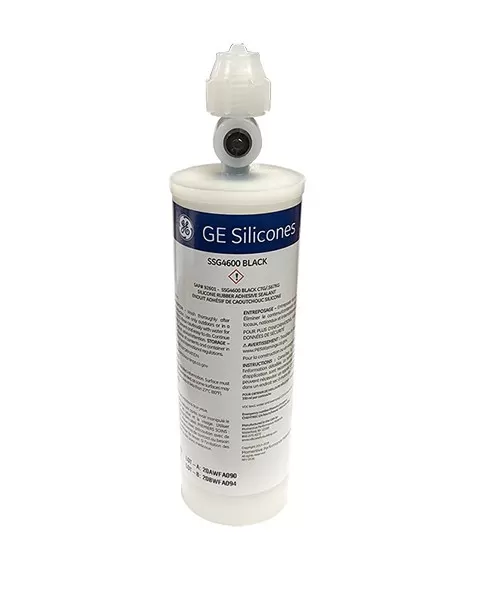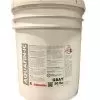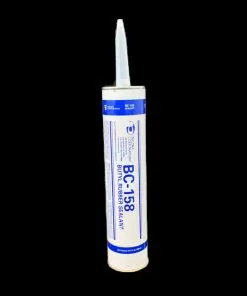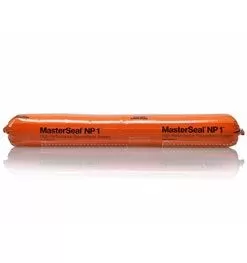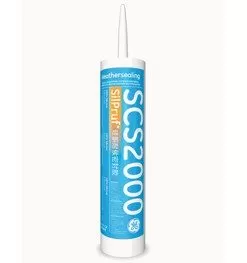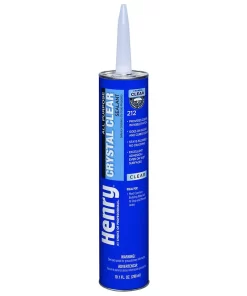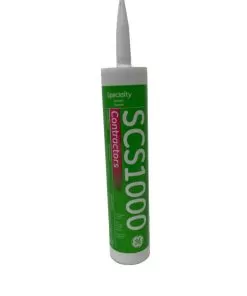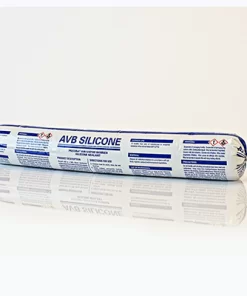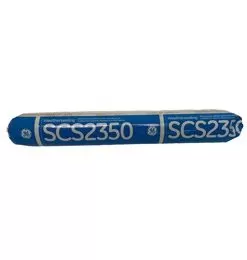GE 4600 UltraGlaze: 12.8 oz Tubes
$96.00
Color: Black
GE 4600 UltraGlaze is a high-strength, 2-component silicone elastomeric adhesive/sealant for a wide variety of glazing applications, including the fabrication and shop glazing of structurally glazed curtain wall systems. SSG4600 provides fast adhesion and strength build; curing quickly when mixed, to a very high strength, tear-resistant durable silicone rubber.
GE 4600 UltraGlaze: 12.8 oz Tubes
GE 4600 UltraGlaze sealant provides superb strength, durability and flexibility. It’s designed to deliver maximum performance for in-shop curtainwall fabrication and structural glazing applications.
Quick and easy to apply
- GE 4600 UltraGlaze is a Two-part system
- Low-pumping viscosity and high-application rate to help ensure fast, thorough joint filling and easier tooling
- Adjustable work life (from 20 to 90 minutes) to fit project, climate, and unit production requirements
Key Features and Typical Benefits Performance
• Silicone durability—Cured silicone rubber exhibits excellent long term resistance to natural weathering including: extreme temperatures, ultraviolet radiation, rain and snow, with negligible change in elasticity.
• Primerless adhesion—Attains strong bonds to many conventional substrates and finishes without the need of a primer.
• Low pumping viscosity—Decreased stress on equipment can lead to longer pump life and reduced maintenance costs.
• Fast adhesion build—Enhances early stability of assembled parts.
• Protective glazing—GE 4600 UltraGlaze offers an excellent combination of strength, flexibility and tear resistance to help counter the higher forces created by hurricane, impact and blast loads.
• Product compatibility—Compatible with GE Insulating Glass, Structural and Weather sealing silicones.
Application
• Adjustable work life—Variable ratio of parts A+B to accommodate assembly and application under varying conditions.
• High application rate—Faster and more thorough joint filling capability with easier tooling effort.
Aesthetics
• Catalyst options—Non-flammable catalyst available in black or grey.
• Materials—Compatible with many types of coated glass, metal finishes, glazing gaskets, setting blocks and spacers.
Potential Applications
GE 4600 UltraGlaze is an excellent candidate for use:
• In structural glazing applications such as factory glazing of curtainwall units and modules for unitized and panelized systems.
• As a weatherseal product, when movement expected in the joint does not exceed its movement capability (±25%).
• In protective glazing applications.
Installation
-Prior to production, a sample of base (part A) and catalyst (part B) should be taken from each lot of material to be used, weighed to the desired A/B ratio, mixed and checked for proper curing before placing material in production.
Surface Preparation
-Sealants may not adhere or maintain long-term adhesion to substrates if the surface is not prepared and cleaned properly before sealant application. Using proper materials and following prescribed surface preparation and cleaning procedures is vital for sealant adhesion. MPM can provide quality control information and suggestions to users upon request.
Materials
• Use clean, fresh solvent as recommended by the MPM project-specific test report. When handling solvents, refer to manufacturer’s Safety Data Sheet for information on handling, safety and personal protective equipment. Isopropyl Alcohol (IPA) is commonly used and has proven useful for most substrates encountered in SSG systems. Xylene, MEK and Toluene have also been found useful on many substrates. Do not use Denatured Alcohol. Denatured Alcohol is not suggested because of the variability of additives, which may or may not provide reproducible results.
• Use only clean 99.9% pure industrial grade solvents. Do not use diluted solvents.
• Use clean, white cloths free of lint or other suitable lint-free wiping materials. • Use a clean, narrow-blade tooling knife when tooling structural silicone into the cavity.
• Use primer when required (reference MPM project-specific adhesion test report)
Cleaning Procedures
• Remove all loose material (such as dirt and dust), plus any oil, frost or other contaminants from the substrates to which the structural silicone will be applied to.
• Do not use detergent to clean the substrate as residue may be left on the surface.
• Clean the substrates receiving the sealant as follows: Using a two-rag wipe technique. Wet one rag with solvent and wipe the surface with it, then use the second rag to wipe the wet solvent from the surface BEFORE it evaporates. Allowing solvent to dry on the surface without wiping with a second cloth can negate the entire cleaning procedure because the contaminants may be re-deposited as the solvent dries.
• Change the cleaning rags frequently, as they become dirty. It is easier to see dirt if white rags are used. Do not dip used wipe cloths into solvent as this can contaminate the solvent. Cleaning with contaminated solvent can result in sealant adhesion issues. Always use clean containers for solvent use and for solvent storage.
• When cleaning deep, narrow joints, wrap the cleaning cloth around a clean, narrow-blade putty knife. This permits force to be applied to the cleaned surface.
• Clean only as much area as can be sealed in one hour. If cleaned areas are again exposed to rain or contaminants, the surface must be cleaned again.
For more information: Contact Us
| Weight | 2 lbs |
|---|
Related products
Concrete
All Products
Air and Vapor Barrier





